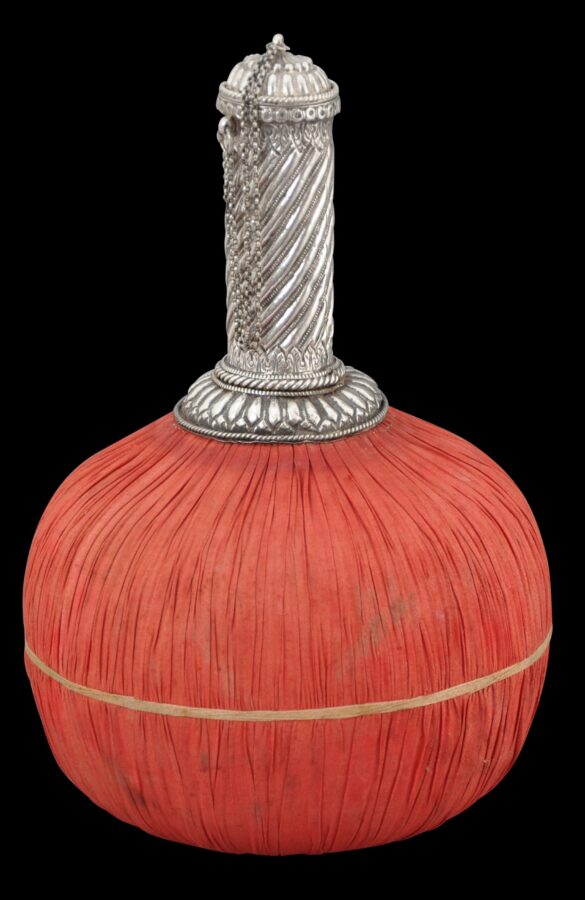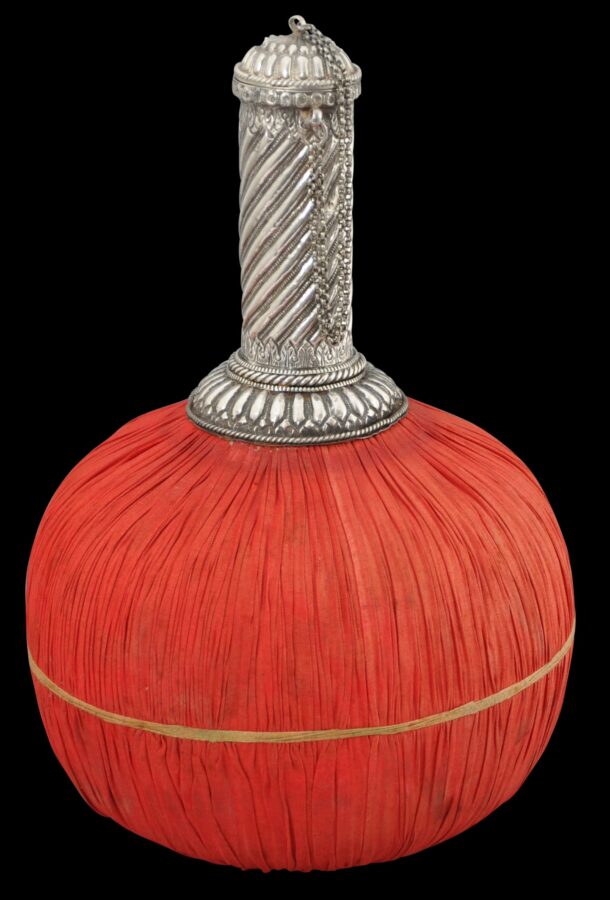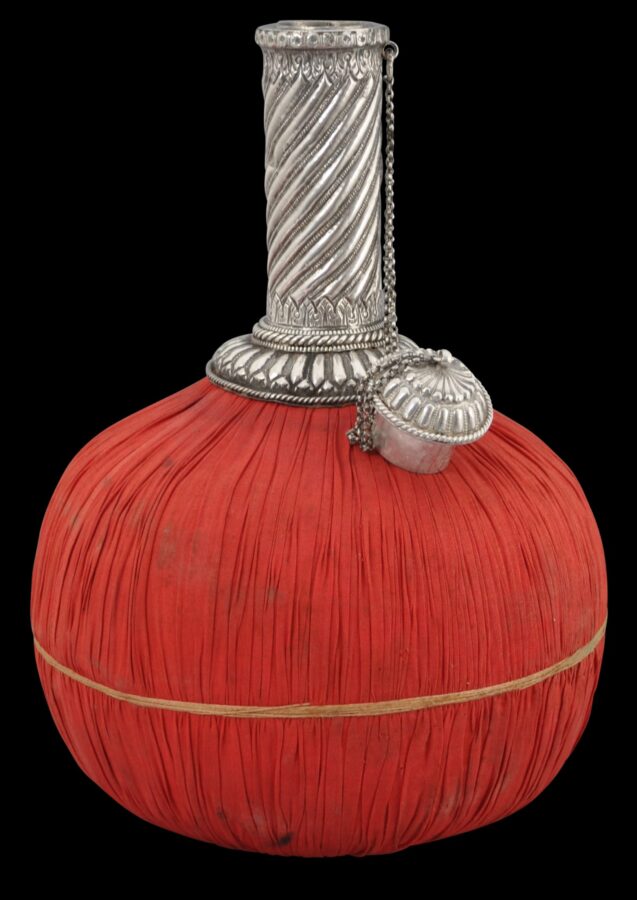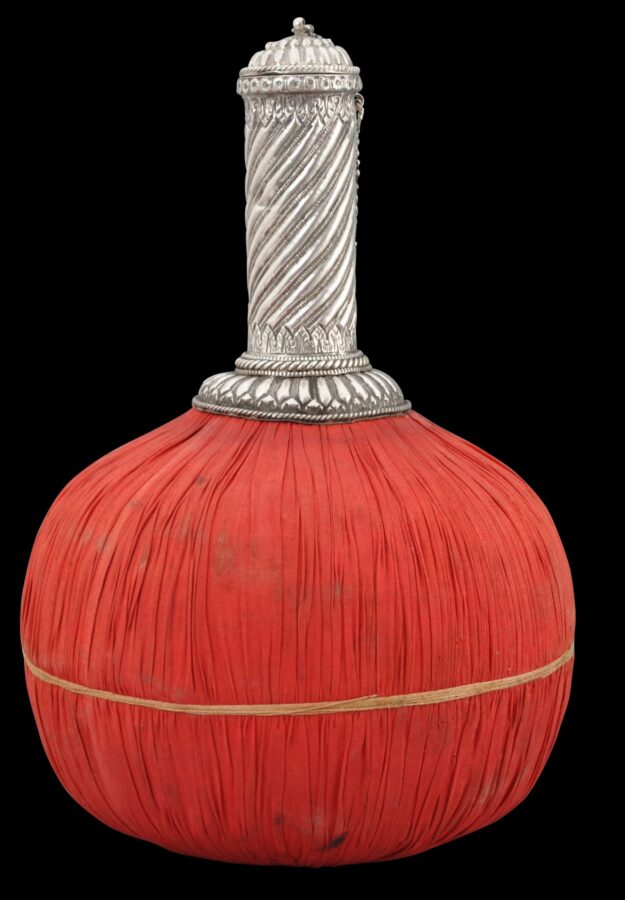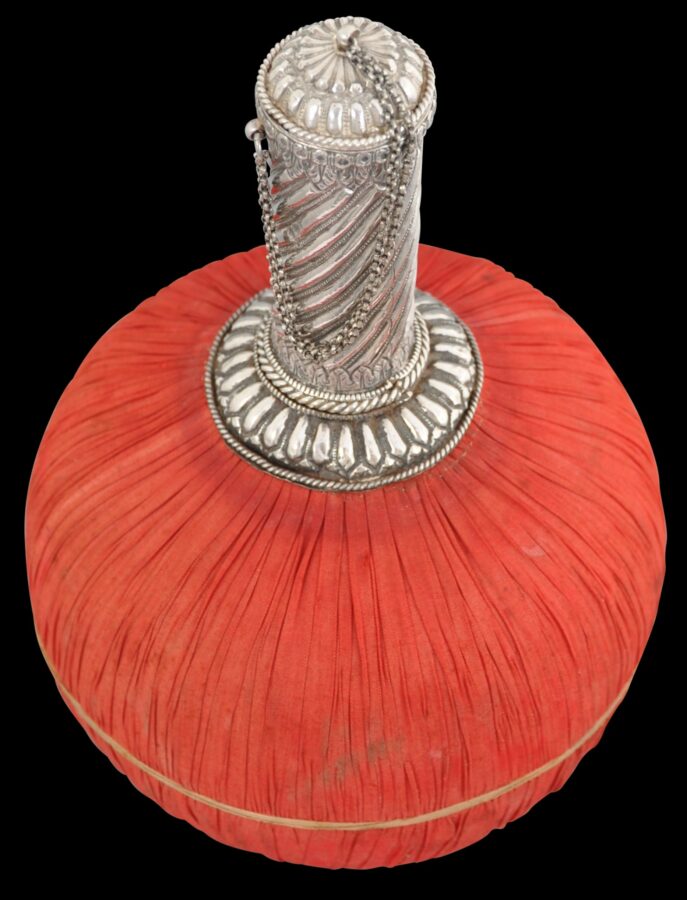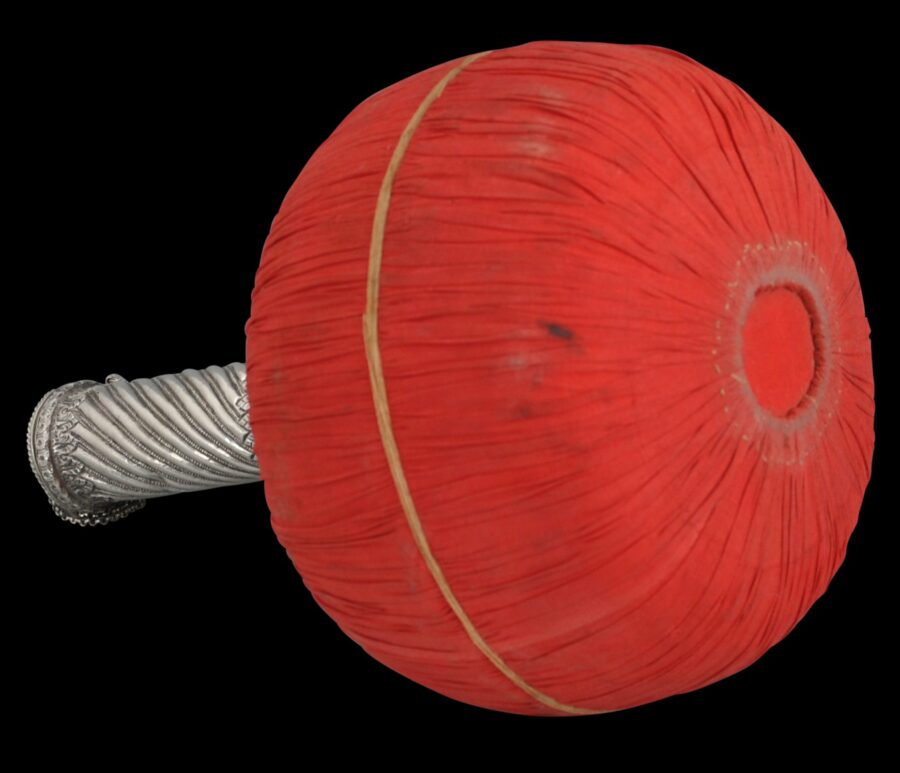Enquiry about object: 9466
Mughal Zinc Cooling Bottle with Silver Mounts & Fabric Covering
Northern India 18th century
height: approximately 28cm, width: approximately 19cm, weight: 1,556g
Provenance
UK art market
This bottle comprises a bulbous base typically hammered and raised from plain zinc sheet, and a neck and stopper of high-grade solid silver. The neck has been chased with a spiraling motif rising out of and acanthus leaf border, mirrored by another such border at the top. The shoulder is chased with petal motifs in high relief followed by a rope-twist border.
The rim has a raised border, and the domed stopper decorated with two differing tiers of petals and with a small loop finial, sits in the opening of the neck.
The original silver chain links the lid to a loop on the neck.
The base is covered completely in a red-dyed muslin that has been carefully gathered and pleated around the base.
Bottles such as this example were used to cool liquids – water or perhaps wine. The cloth on the base would be soaked with a water and saltpetre solution to chill the contents.
An example of a similar style cooling bottle is illustrated in Terlinden (1987, p. 114.) An Ottoman example comprises lot 126 in Christie’s London, ‘Islamic Art and Manuscripts’, October 12, 2004.
Zinc as a metal, was prized throughout the Islamic world in the seventeenth and eighteenth centuries. By the second half of the seventeenth century metalworkers had discovered that zinc was quite malleable at only a little above the boiling point of water so making vessels from sheet zinc became more widespread.
A similar example that was first mentioned in the inventory of the Royal Danish Kunstkammer in 1741 and is now in the National Museum of Denmark is illustrated in Dam-Mikkelsen & Lundbaek, 1980, p. 102. Another is in the Hermitage Museum, St Petersburg, Russia.
The example here is in fine condition. The silver, which is over a clay core or similar, has some minor denting from age and use.
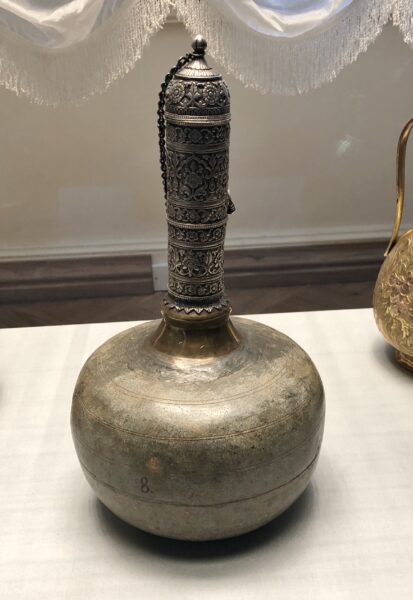
Above: An example in the Hermitage Museum, St Petersburg, Russia. This example no longer has its fabric covering thereby revealing its zinc base.
References
Christie’s London, ‘Islamic Art and Manuscripts’, October 12, 2004, lot 126.
Dam-Mikkelsen, B., & T. Lundbaek (eds.), Ethnographic Objects in the Royal Danish Kunstkammer 1650-1800, Nationalmuseet, 1980.
Terlinden, C., Mughal Silver Magnificence: 16th-19th Centuries, Antalga, 1987.
Zebrowski, M., Gold, Silver & Bronze from Mughal India, Alexandria Press, 1997.


